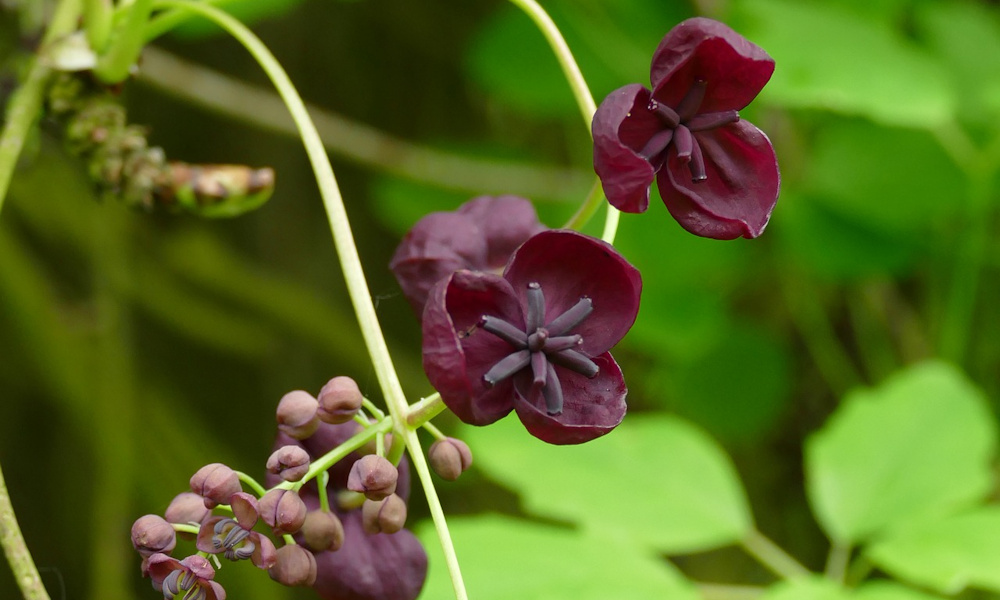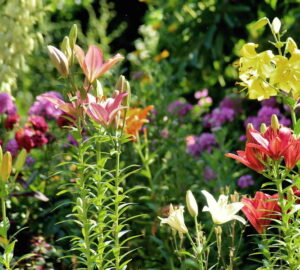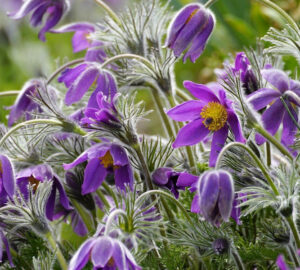If you’re looking to add something truly distinctive to your garden, the chocolate vine (Akebia quinata) might just be the perfect candidate. This fast-growing climber is not only strikingly beautiful but also surprisingly versatile — and yes, it even produces edible fruit.
Eye-Catching and Aromatic
Native to East Asia, the chocolate vine is named for the sweet, cocoa-like scent of its flowers, which appear in spring. These blossoms range from deep purple to dusky burgundy and often bloom in clusters that draw both the eye and the nose. The foliage is equally attractive: five-part compound leaves that form a lush, green curtain through the growing season.
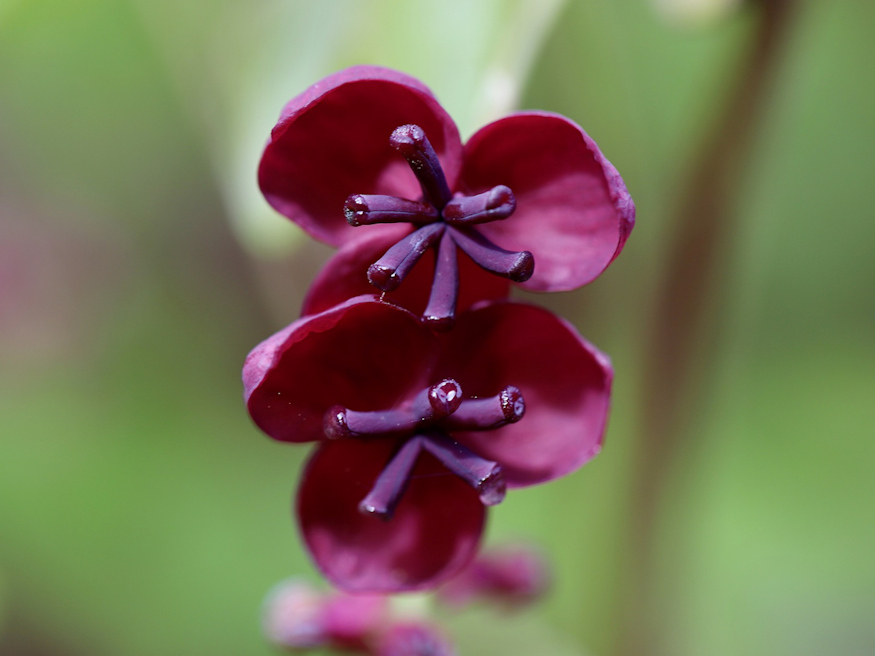
Unexpected Fruit
With the right conditions — and a bit of cross-pollination between different plants — Akebia quinata can reward you with curious-looking, sausage-shaped fruits. These pale purplish pods split open when ripe to reveal a soft, jelly-like pulp that’s subtly sweet and edible. In parts of Asia, both the pulp and the rind are considered delicacies.
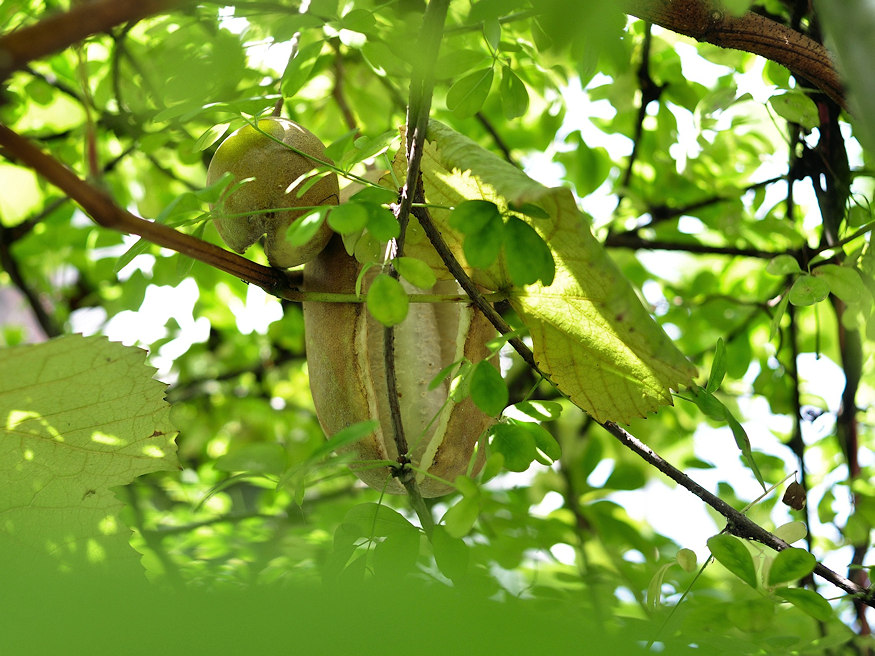
Growing Conditions
The chocolate vine adapts easily to many environments, making it a popular choice for home gardeners.
- Light: It thrives in full sun to partial shade. More sun means more flowers, while deeper shade results in more vigorous foliage but fewer blooms.
- Soil: Prefers moist, well-drained soil. It can tolerate a variety of soil types but grows best in loamy, slightly acidic to neutral ground.
- Water: Regular watering helps establish healthy growth, especially in hot or dry climates.
- Climatic Tolerance: The chocolate vine is surprisingly cold-tolerant and can survive winter temperatures as low as -25°C (-13°F) in well-drained soil and sheltered locations. It is generally hardy in temperate regions corresponding to USDA zones 5 through 9, though mature, well-established plants tend to handle cold better than young ones.
- Pruning: To prevent it from becoming too wild, prune annually in late winter or early spring. This also encourages better flowering.
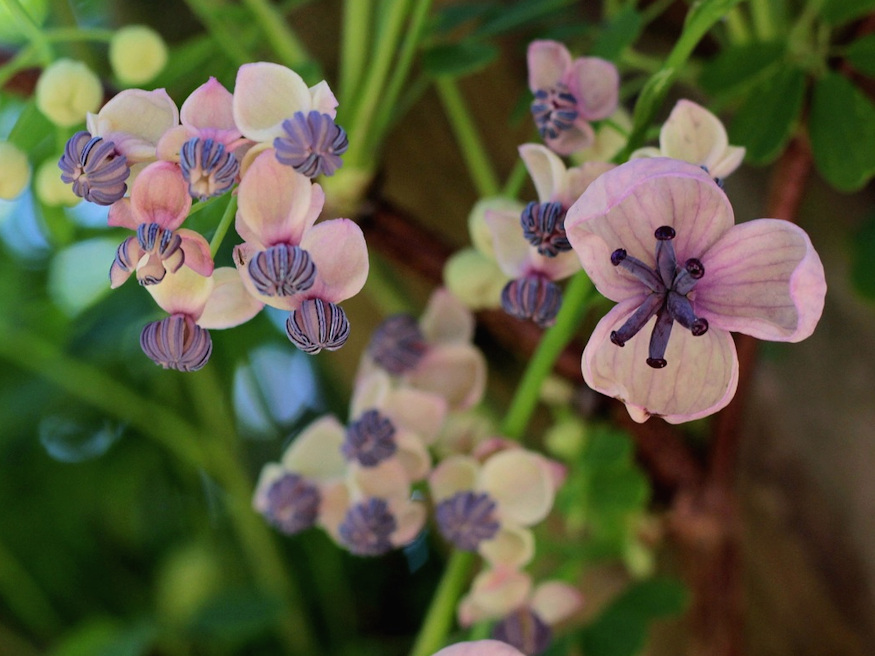
Providing the Right Support
The chocolate vine is a vigorous and twining climber that needs proper support to thrive and show off its ornamental potential. It doesn’t have clinging roots or tendrils, so it relies on twining its stems around structures. To encourage upward growth, offer sturdy vertical elements such as:
- Pergolas and arbors: Ideal for showcasing the vine’s trailing foliage and hanging flowers. Over time, the plant can create a shady canopy.
- Trellises: A great option for training the vine in a controlled manner, especially if space is limited.
- Fences and walls: With guidance (such as tying or weaving the stems), the vine can be trained to cover unsightly fences or decorate blank walls.
- Garden arches or gateways: These allow the plant to frame entrances and pathways beautifully, adding a romantic, slightly wild touch to the landscape.
Keep in mind that due to its fast growth, the support structure should be strong enough to hold the vine’s weight as it matures. Regular training and tying may be necessary, especially in the first growing season.
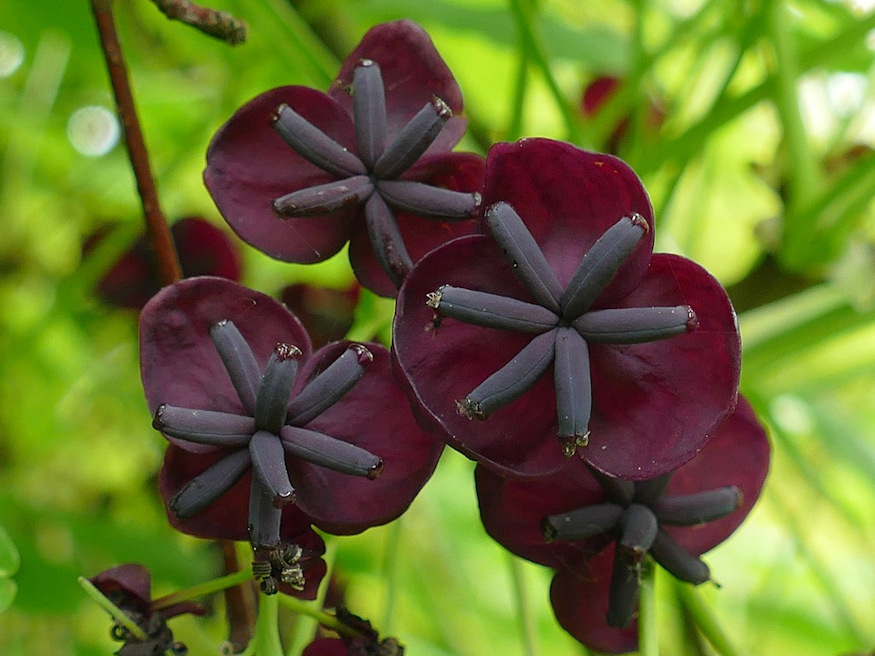
A Few Words of Caution
While the chocolate vine is undoubtedly beautiful, it can be aggressive in some climates. Left unchecked, it may spread rapidly and overwhelm other plants. In certain regions it’s even considered invasive, so regular pruning and monitoring are essential. If you’re unsure, check whether it’s suitable for your local environment before planting.

Why It’s Worth a Try
Whether you’re in search of a conversation-starting climber, a fragrant floral display, or just something a bit different, Akebia quinata offers a blend of charm and uniqueness. With its eye-catching leaves, unusual fruits, and heady scent, the chocolate vine could easily become the unexpected star of your garden — as long as you give it the structure and space it needs to shine.




